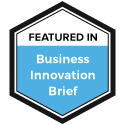
Critical Habits of High Performers in the New Normal: A Blueprint for Sustainable Success
Critical Habits of High Performers in the New Normal: A Blueprint for Sustainable Success
Where the lines between personal and professional life blur, the question of high performance has become more relevant than ever. How do individuals and organizations not only achieve but sustain excellence in this “new normal”? Mark Cunningham, founder of The Achieve Institute, shared insights on The Bliss Business Podcast that offer a timely and profound answer to this question. His message was clear: success is not about grinding harder — it’s about developing the right habits and mindset to work smarter.
The Power of Commitment to High Performance
Cunningham’s philosophy begins with a simple but powerful idea: commitment. High performance, in any field, starts with an unwavering decision to be fully invested. This isn’t just a corporate buzzword; it’s a mindset. According to Cunningham, whether you’re an athlete or a business professional, you must be “all in.” Dabbling or half-hearted efforts will never yield the results you’re striving for. What’s fascinating, however, is his observation that many organizations, even large ones, fall into a survival mode, moving from one quarter to the next without truly committing to long-term excellence.
In high-performing teams, commitment is the foundation. Once this commitment is in place, everything else follows, from setting goals to aligning daily actions. It’s not just about showing up; it’s about showing up with purpose, every single day.
Forward-Thinking Habits: The Key to Continuous Growth
One of the most insightful habits Cunningham identified is the importance of having a forward-thinking mindset. In today’s world, where change is happening faster than ever, this habit is critical for sustained success. He noted that many people and organizations unintentionally operate with a “rearview mirror” mentality — looking backward to understand the future. This approach limits creativity, innovation, and ultimately, growth.
Instead, Cunningham advocates for a future-oriented approach where teams focus on creating what they need rather than fixing what they have. This shift is more than just an attitude adjustment; it’s a practical framework that helps organizations break free from incremental improvements and embrace transformative change. When leaders set a clear vision — a “North Star” — for their teams, they create space for innovation, collaboration, and forward momentum.
The Danger of Fixing Instead of Creating
A central theme in Cunningham’s methodology is the distinction between fixing and creating. He found that too many organizations fall into the trap of constantly fixing problems, which keeps them tethered to the past. Fixing is reactive, and while it’s sometimes necessary, it doesn’t drive true progress. High-performing teams, on the other hand, focus on creation — building systems, processes, and solutions that drive them toward their goals.
Cunningham’s personal story as an elite athlete underscores this point. He spent a year trying to fix his discus throw, only to get more frustrated and stagnant. It wasn’t until he shifted to focusing on creating an ideal throw — rather than fixing what was broken — that he saw a dramatic improvement, gaining 30 feet in his performance within six weeks. This principle applies to business, too: focusing on creating the future, rather than obsessing over the problems of the past, unlocks new levels of performance and innovation.
Engaging the Entire Workforce: The Myth of the Top 10%
A particularly compelling part of Cunningham’s philosophy is his approach to engaging the entire workforce. Too many organizations focus exclusively on their top 10% of performers, rewarding them while neglecting the potential of the other 90%. Cunningham argues that this is not only short-sighted but leaves significant performance gains on the table.
By focusing on the bottom third or middle tier of employees, leaders can unleash untapped potential that, when nurtured, can drive significant results. Cunningham’s example of a sales team that shifted from a narrow focus on top performers to a broader approach highlights this. By engaging the entire team, the organization saw a 33% year-over-year improvement in just two quarters, and a 75% improvement within a year. This radical shift from “exclusive performance” to “inclusive growth” is a critical habit for any leader seeking sustained success.
Sustainability Over Burnout: The Role of Balance
Cunningham’s approach to high performance is rooted in sustainability. He draws from his athletic background to emphasize that pushing harder isn’t always the answer. In fact, working too hard can lead to diminishing returns, burnout, and injury — both physical and mental. The key to long-term success lies in working smarter, not harder. High performance isn’t a one-time event; it’s a consistent effort to grow and improve over time, which requires balance and recovery.
In today’s hyper-connected world, where the demands of work often bleed into personal life, finding that balance is more challenging than ever. But it’s also more essential. Cunningham advises that downtime and recovery are as much a part of high performance as hard work. Without rest and reflection, even the most talented individuals and teams will eventually burn out.
Love and Connection: The Human Side of High Performance
Finally, Cunningham touches on an often-overlooked aspect of high performance: love and connection. For some, the idea that love belongs in business might seem out of place. Yet Cunningham makes a powerful argument that loving what you do — and fostering connection within your team — is not only beneficial but essential for achieving and sustaining high performance.
When people feel connected to their work and to each other, they are more motivated, more engaged, and more productive. High-performing organizations aren’t just focused on hitting numbers; they are focused on creating environments where people thrive. And when people thrive, organizations thrive.
Conclusion: High Performance in the New Normal
In this new normal, where the rules of business are being rewritten, Cunningham’s insights offer a blueprint for sustainable, high performance. It’s not about working harder or pushing people to their limits. It’s about fostering the right habits: commitment, forward-thinking, creating rather than fixing, engaging the entire workforce, and sustaining a balance between effort and recovery. Most importantly, it’s about infusing love and connection into the workplace.
As we continue to navigate an ever-changing business landscape, these habits will be the keys to unlocking long-term success — for individuals, teams, and organizations alike.
Check out the conversation with Mark Cunningham on The Bliss Business Podcast
Originally Featured on The Bliss Business Podcast Blog












Recent Comments